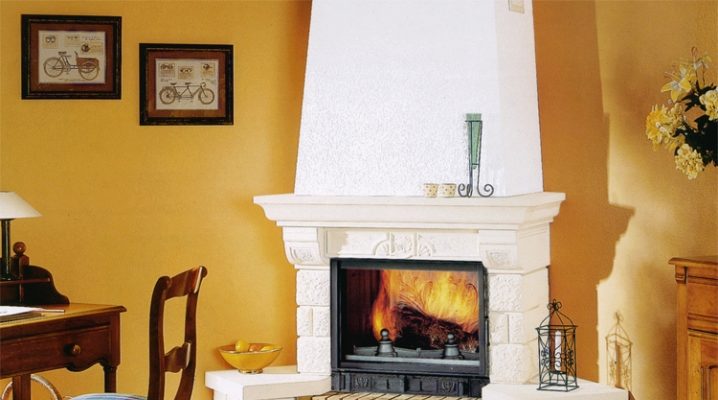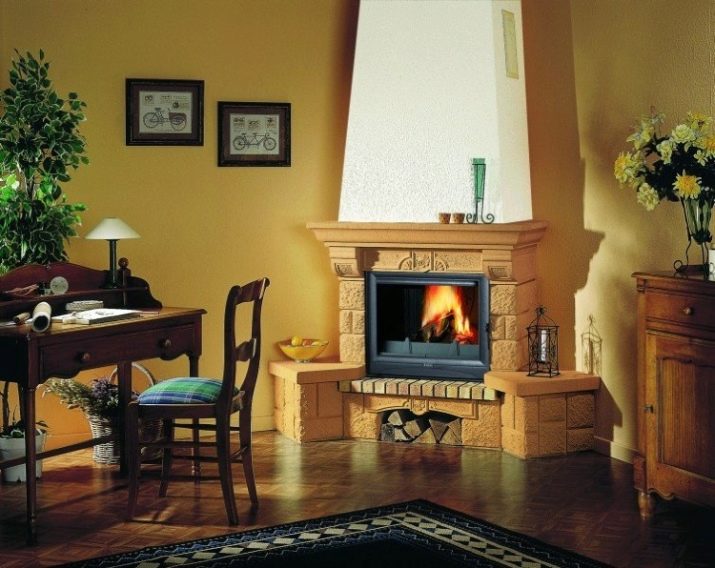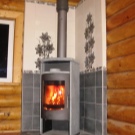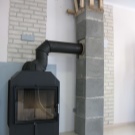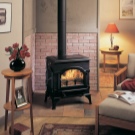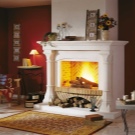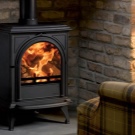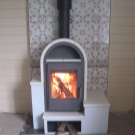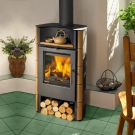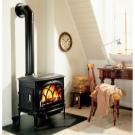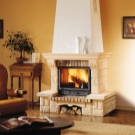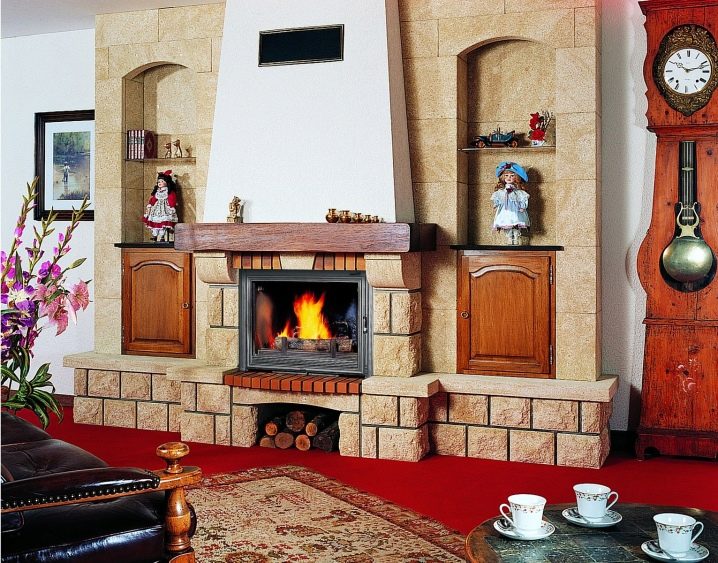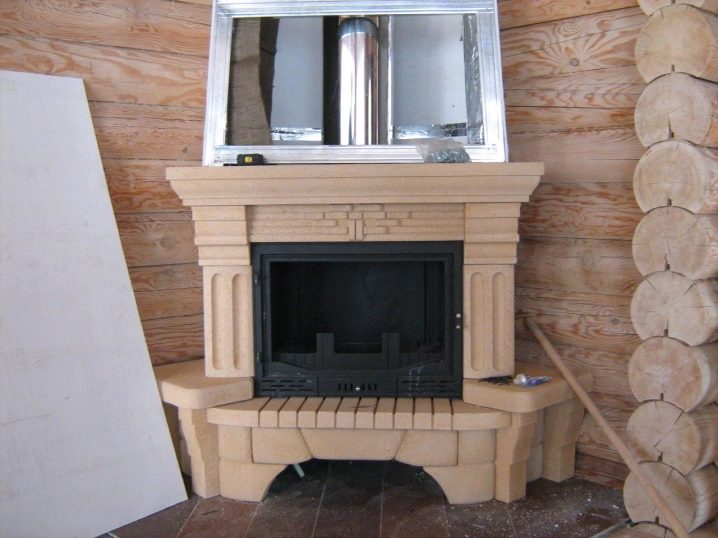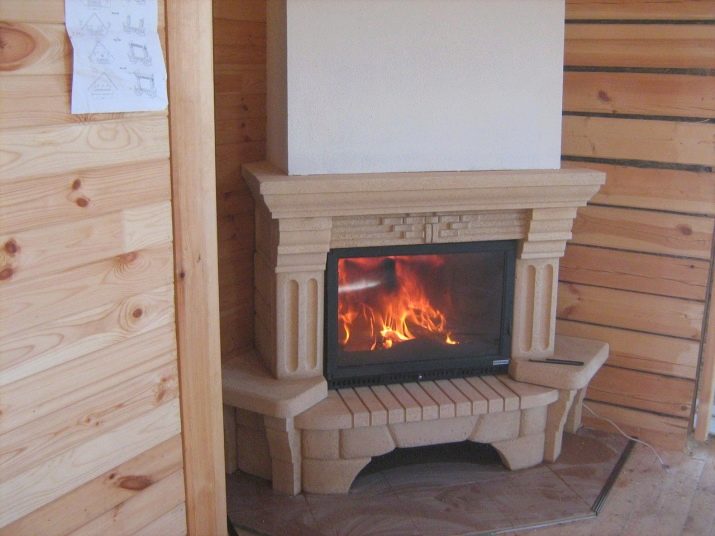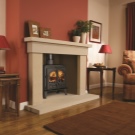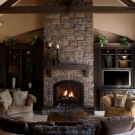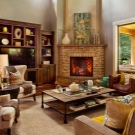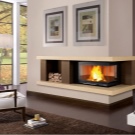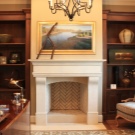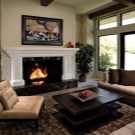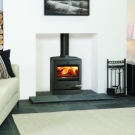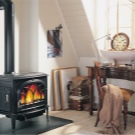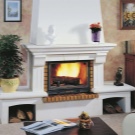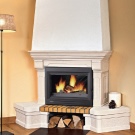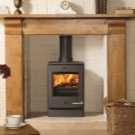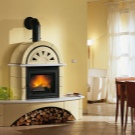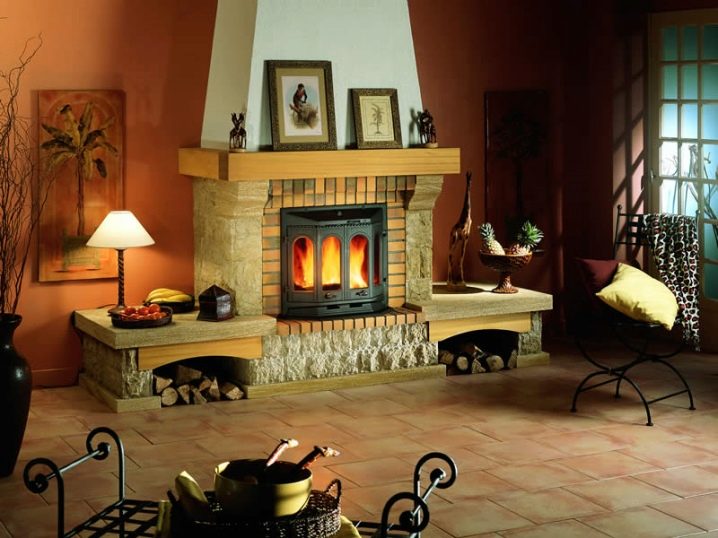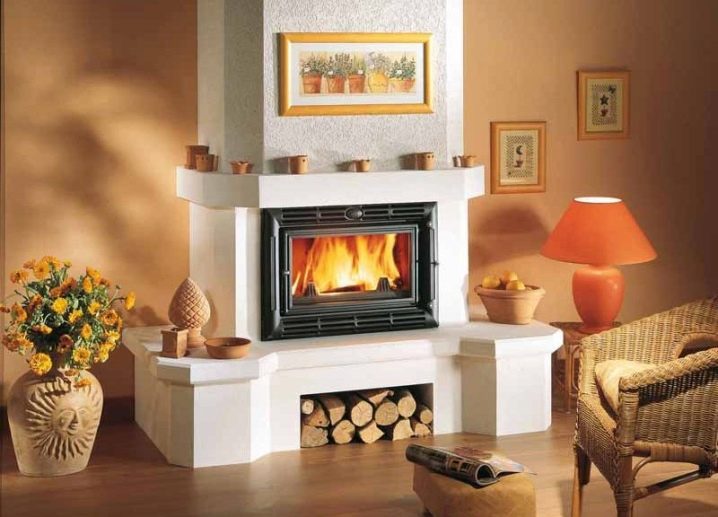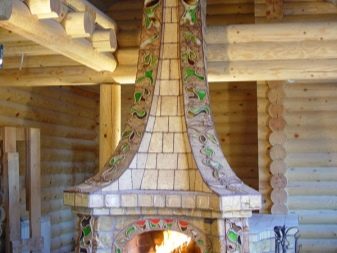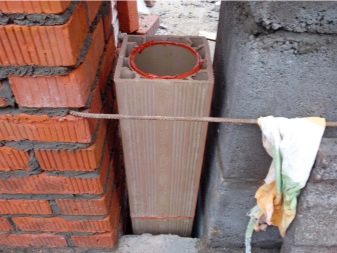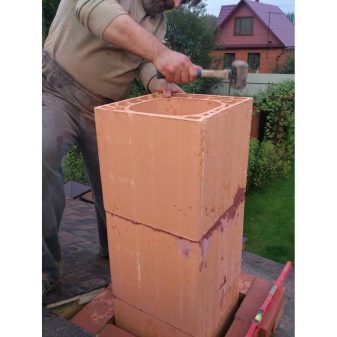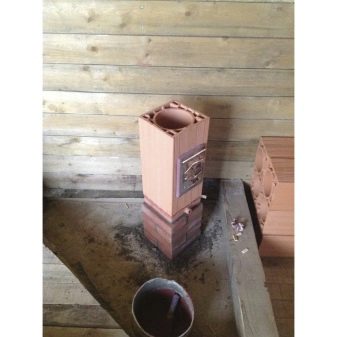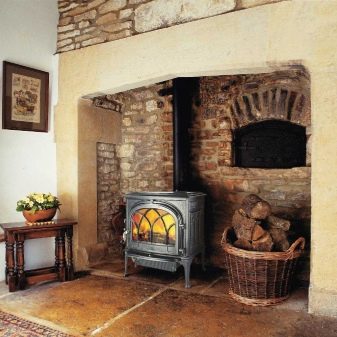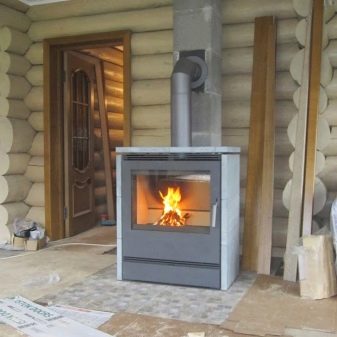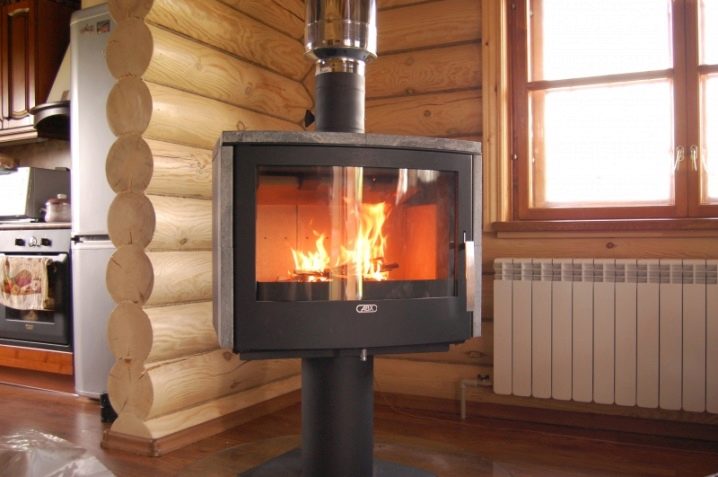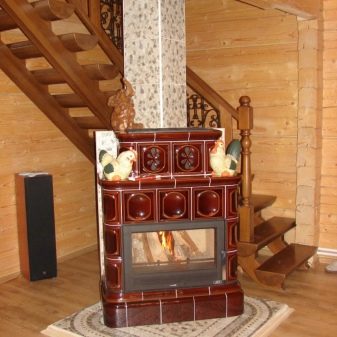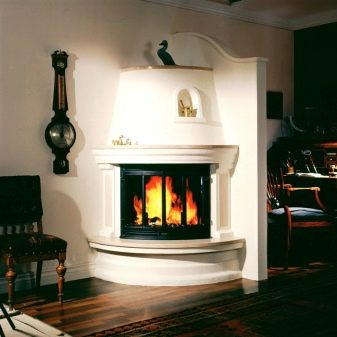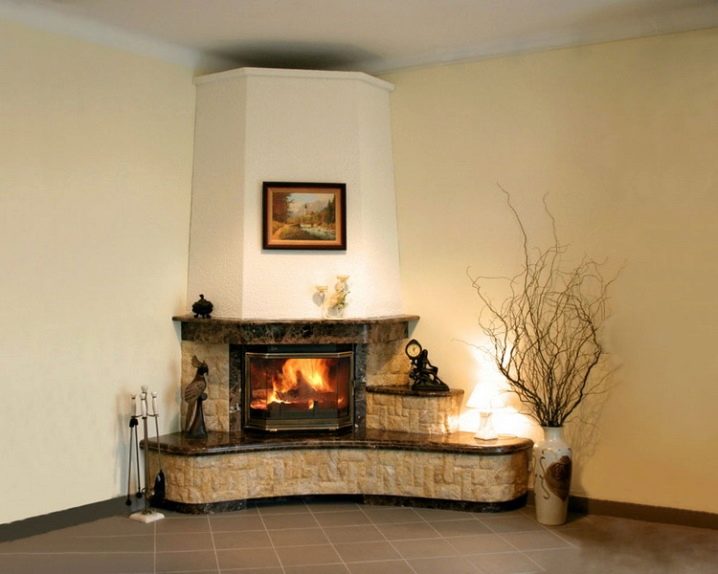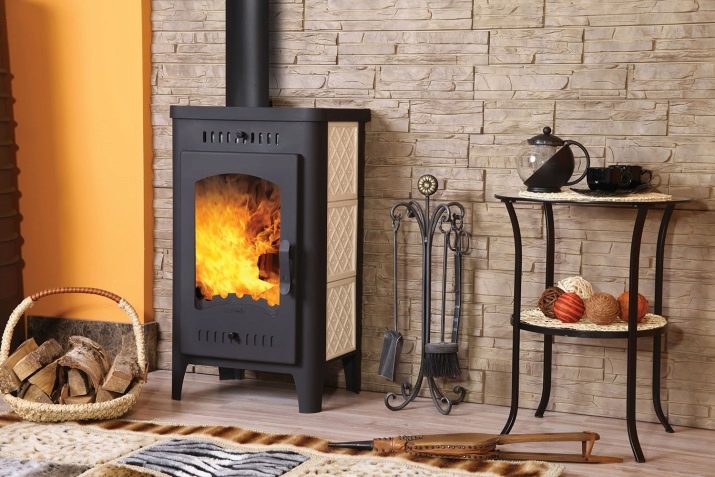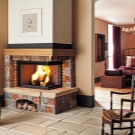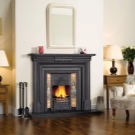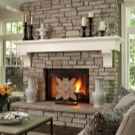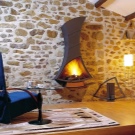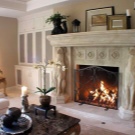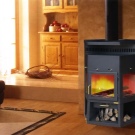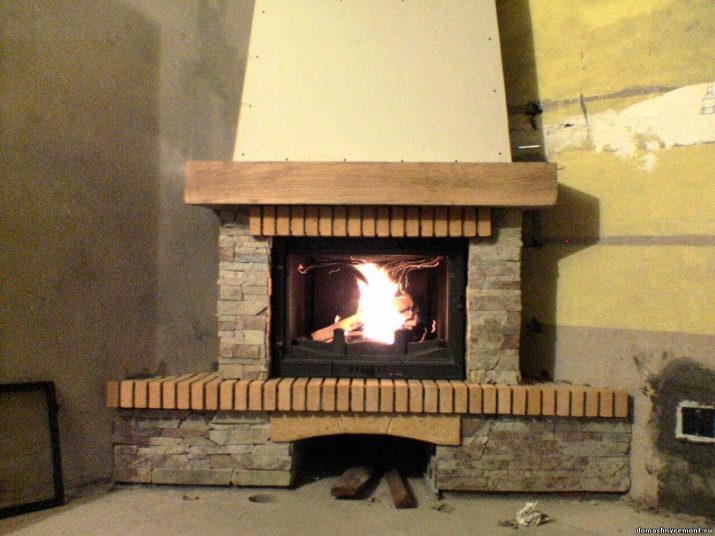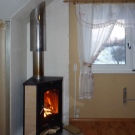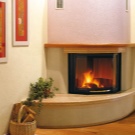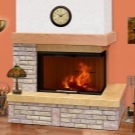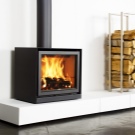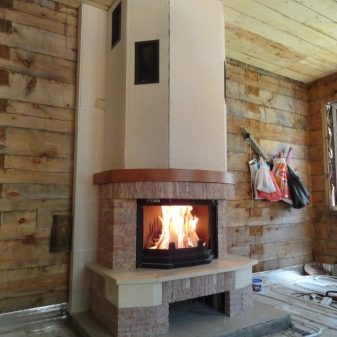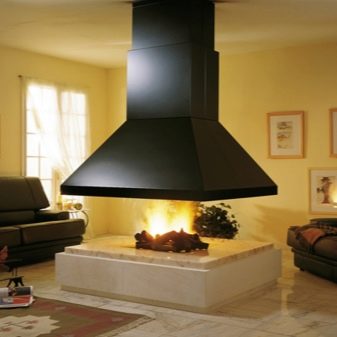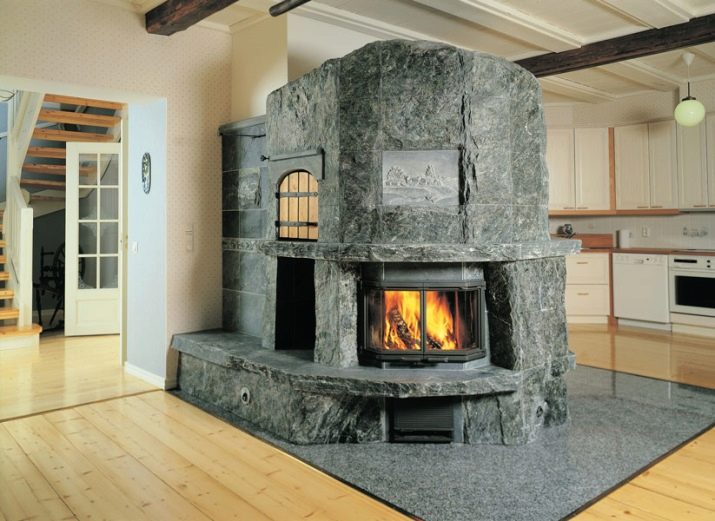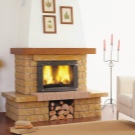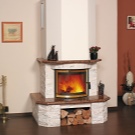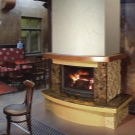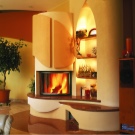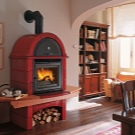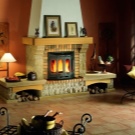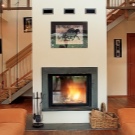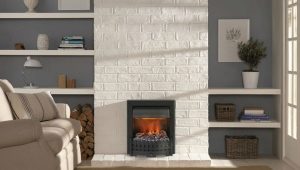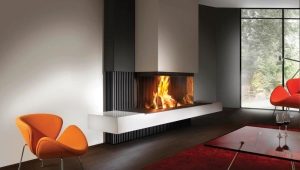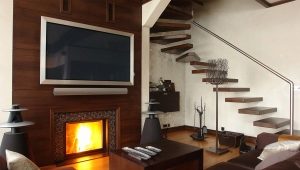Installing a fireplace and installing a chimney
Stoves and fireplaces are often called the soul of the house. And since the fireplace is unthinkable without fire and firewood, it is important to properly install it and the chimney so that the fireplace is safe and gives you pleasant moments.
Principle of operation
For the kindling of the fireplace they use fuel (ordinary firewood, pressed coal briquettes and even fuel oil), which must be set on fire. Fuel burns quite quickly and at the same time heats the air around, but when burned, carbon dioxide is emitted from the fuel in large quantities. For a long time, our ancestors figured out how to get rid of it: build chimneys. Then, according to the laws of physics, hot carbon dioxide will rise up, and the fire in its place will create an influx of fresh and cold air from the room, rich in oxygen. The phenomenon of changing the air in a room is called a plunge; it is also used in the ventilation systems of apartment buildings.
Check how the chimney works is simple: when the fireplace is turned off, hold a burning match, lighter or just a thin paper strip to the opening of the chimney and pay attention to the behavior of the fire or paper. When working correctly, the flame will be turned in the direction of the chimney, if there is not enough inadequate fluctuations, you will not see the flame, but if the flame goes towards the room (from the chimney), then this is a reverse thrust. This means that all carbon monoxide goes back to the room, which is very dangerous for people in the room. This chimney can not be used! But a strong traction will bring all the heat to the street, almost without scorching the house.
It is important to build fireplaces so that the fire was at a safe distance for people and flammable objects, and carbon monoxide could not get into the room, all went to the chimney. Then both the fireplace and the chimney will be fairly safe.
What materials are chimneys made of?
In order for the pipe to work properly and serve as an exhaust hood, the chimney is made vertical and tight, sufficiently high and durable, fire-resistant and fireproof from chemically resistant materials.Options suitable for the manufacture of the chimney and a lot of fire, but each has its own characteristics that must be considered when choosing. Traditional materials - brick, ceramics and steel, less often use polymer chimneys and glass structures.
Solid brick is characterized by high heat resistance, if properly installed and maintained, serve for more than 10 years. Sometimes use special non-combustible stones (non-silicate products). But this beautiful material has its drawbacks:
- A deeper foundation is required;
- Proper design and laying of bricks requires special skills and knowledge, which is why they often hire specialists, their services are quite expensive, and the brick itself is much more expensive;
- Subsequent maintenance and cleaning of the chimney is more difficult due to the square shape of the pipe. Deposited on the walls, soot and ash can interfere with traction;
- Condensate is the main enemy of the brickwork, which destroys the walls of the chimney and harms the draft.
With high-quality cleaning and careful operation, the lifetime of ceramics (about 30 years) can be extended by 10 years. What else is good for ceramics?
- The price of the ceramic chimney is inferior to the stone;
- Rather easy installation thanks to the device and features of installation (ceramic chimneys assemble from a pipe and the concrete basis), do not demand the additional base;
- Such structures can be installed indoors or outdoors.
Among the shortcomings is the need for additional thermal insulation. It is difficult to find a ceramic chimney among domestic products, so often it has to be ordered and waited from abroad.
Steel
Steel chimneys are a modern solution, sandwich models consisting of several layers are very popular (a smaller diameter pipe is inserted inside a larger pipe, wrapped with insulating material). This is the most affordable option, relatively simple to build, light in weight. Such chimneys will last about 20 years. Stainless steel will be more expensive, but due to corrosion resistance and temperature changes, it is more reliable.
Steel fireplaces and chimneys - a great solution for a private house or cottage, if you want to place a beautiful and spectacular hearth. In addition to functionality, it is easy to assemble and install.Brandenburg models are noteworthy in this respect: compact and economical fireplaces have several designs, easily fit into the interior and are beaten with facing material. Variants of stainless steel can be installed during construction and in an already built house with minimal rework.
Other materials
Low-cost and durable pipes are made of polymer - durable (up to 250? C), lightweight, not afraid of condensate and temperature changes, they become an excellent solution. Glass after special treatment withstands high temperatures and is not affected by condensate. It allows you to create spectacular ensembles. However, due to the price and some shocking design, this option is used infrequently.
In order to preserve the beautiful design of a brick fireplace, the chimney’s brick and stone masonry are combined with resistant to moisture and wear options - ceramics, steel pipes. Such sandwich models are easy to clean, serve for a long time and give good traction.
Placement of the firebox and chimney
Before you install a fireplace and put a chimney, make a floor plan in which you need to take into account the size of the house, the height of the chimney, the material of construction and type of fuel.Metal and steel pipes are suitable for liquid or gaseous fuels, brick and ceramic chimneys can cope better with pressed and hard wood. Builders do a lot of emphasis on the placement of the pipe:
- With the external location of this fireplace could be located inside the house against the external wall, and part of the chimney turned out to be "on the street."
- In the internal (wall) position, the chimney passes in the house, the smoke in the pipe cools gradually, without forming condensate. The chimney and fireplace occupy a lot of space, so it is recommended to place the firebox at the inner wall of the house. So it is possible not only to solve design problems, but also to use all the heat. It is necessary to take into account the load on the supporting structures and pay attention to the insulation of the heating parts, the tightness of the pipe.
- Mounted pipes are located directly above the furnace, forming a single vertical structure;
- Indigenous or freestanding chimneys need a separate foundation, because they are located on the side of the furnace.
Whichever version of the fireplace and the location of the chimneys you chose, think about the ventilation system and protection against fire, insulation.
How to install
The installation of the fireplace and the chimney is carried out in a specific sequence to take into account all the nuances, and the design was safe and functional:
- Drawings and planning, calculations. Be sure to take into account the diameters of the chimney and the outlet of the furnace, the height of the pipe, the need for and the presence of horizontal elements in the chimney, cleaning and maintenance.
- Preparing a place for heating. The foundation for the fireplace must be heat-resistant, so it will require a special solution, there must be some distance between the heating system and the rest of the room. In order to ensure safety, a rather deep foundation is made for brick structures. When using metal structures, they are additionally treated with heat-resistant paint. Fire treatment places the position of the fireplace carried out at this stage.
- Installation of the firebox, fireplace. Stone structures are stacked in a certain sequence. Steel fireplaces require rigid installation with the use of anchors - special long bolts that can withstand high loads. Individual parts are connected with aluminum tape, pre-treating the seams with sealants.
- The installation of the chimney begins with the connection with the nozzle. This place is fixed by metal refractory rivets, it creates a tight joint and its insulation from the walls with sheet metal, asbestos-cement materials. The design should not be more than 3 turns, the length of the horizontal sections should not exceed 1 m, and the height of the pipe above the ridge should be at least 0.5 m. Of course, all the joints and seams should be airtight, insulated from the ceilings with non-combustible and insulating layer. Joints with walls and ceilings are fixed with clamps that “react” to temperature changes and take over the load.
- Mounting an otter. Correctly install the cap, box - means to take into account the overall height of the chimney and protect the pipe from falling into the sediment. To do this, you need a special cap and fixtures (deflectors, fjugarki, smoke pumps), contributing to the correct draft.
- Cladding work is the design of a fireplace with non-combustible finishing materials. The floor near the fireplace is often laid out with heat-resistant stone or ceramic tiles, and the walls of metal structures are also closed.
- Ensuring fire safety in a room with a firebox.Do not store large amounts of fuel near the fireplace to prevent ignition. In such a room it is good to keep extinguishing agents (fire extinguisher, container with sand). In large cottages and houses it is useful to install a fire alarm.
It is rather difficult to install such a structure yourself; it is more convenient to use ready-made modular solutions. The basis of choice in this case is the size of the heated house and the type of fuel.
The chimney often becomes not only an exhaust hood, but also a part of the heating system at home. Fire safety and clean air depends on its quality and proper installation. Since the chimney is being made for decades, it is worthwhile to approach the issue of installing a fireplace and installing a chimney very thoroughly, so as not to redo the entire fireplace system, and also not experience inconvenience and frustration due to improper operation of the chimney.
